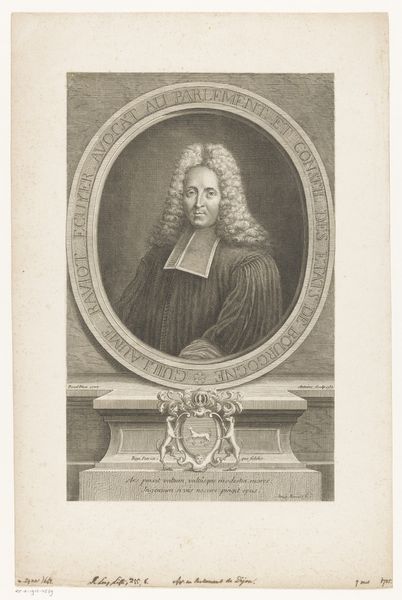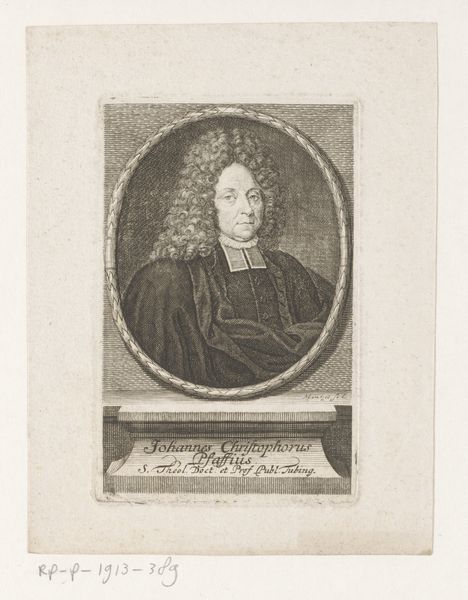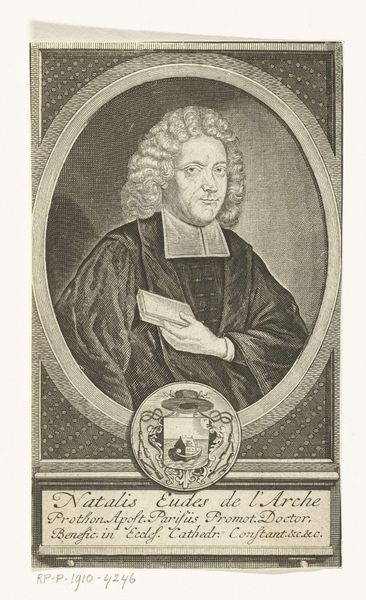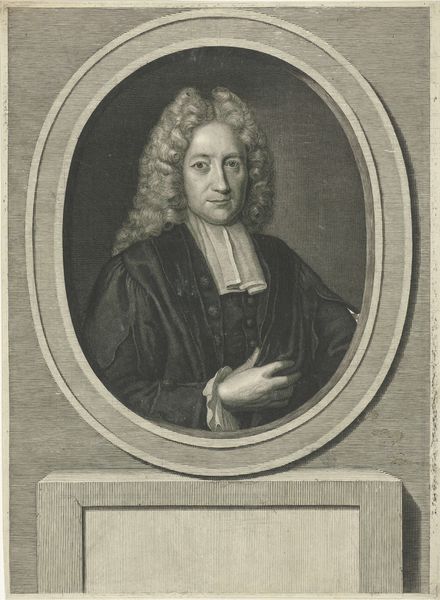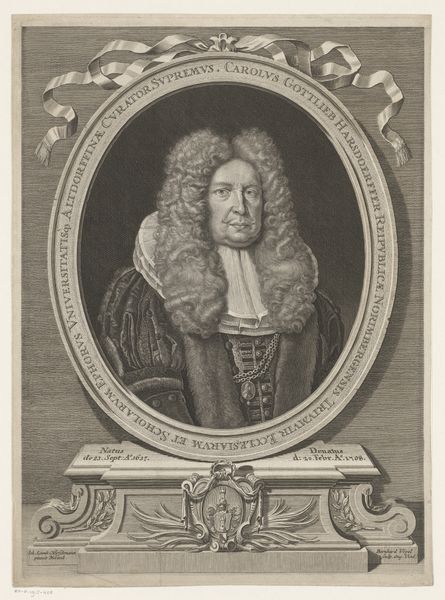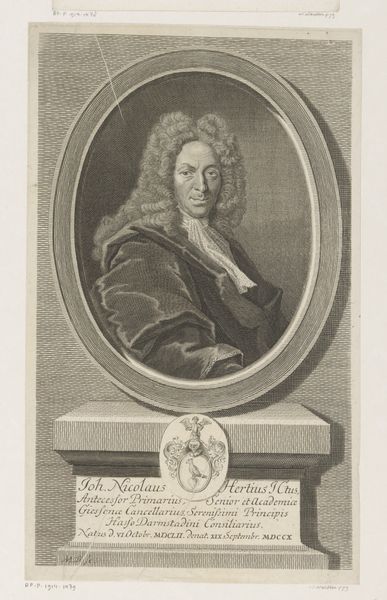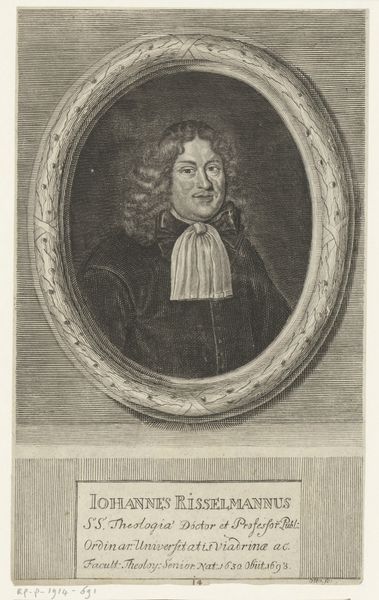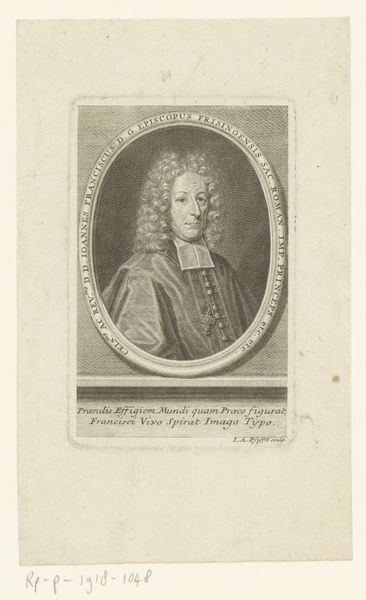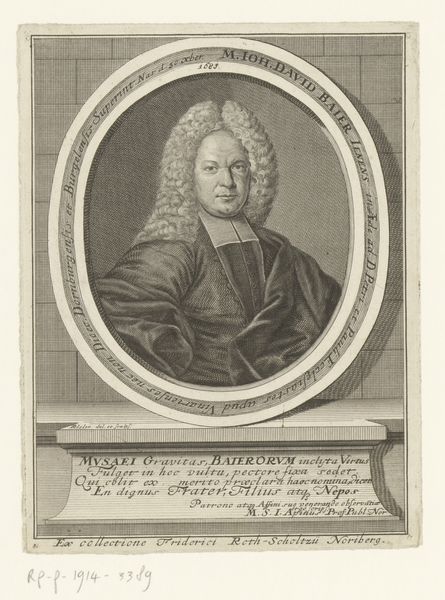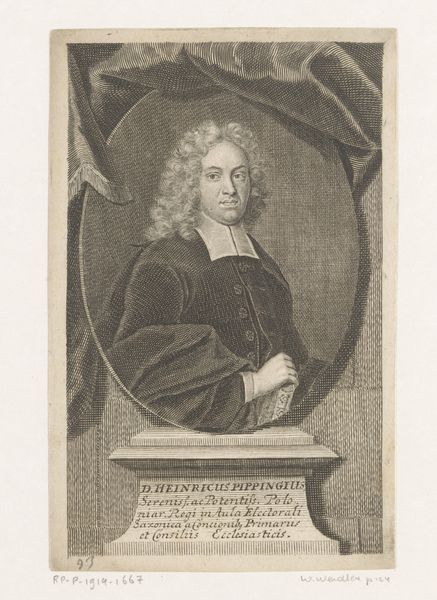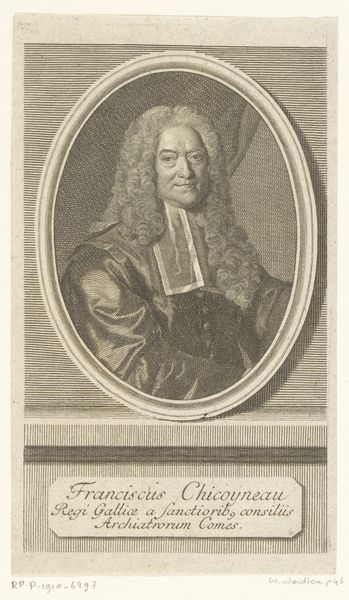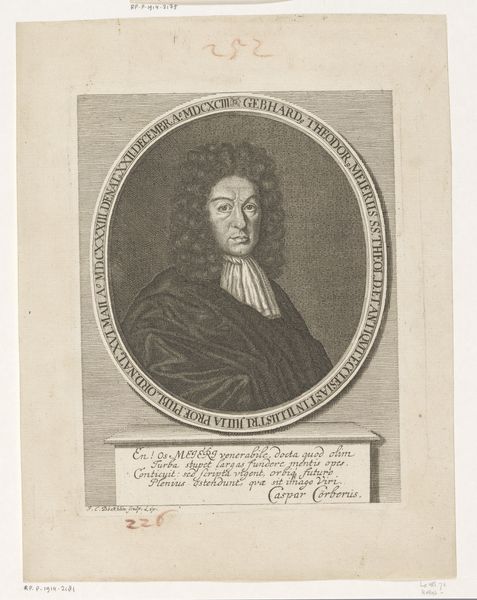
engraving
#
portrait
#
baroque
#
dutch-golden-age
#
old engraving style
#
limited contrast and shading
#
engraving
#
realism
Dimensions: height 315 mm, width 222 mm
Copyright: Rijks Museum: Open Domain
Editor: This is *Portret van de predikant Gerard Puppius Hondius*, an engraving from between 1683 and 1746 by Nicolaas Verkolje, currently residing in the Rijksmuseum. The man looks directly at the viewer; it's a very composed portrait. What strikes you most about this piece? Curator: Beyond the surface-level realism, I find myself pondering the power dynamics inherent in portraiture of this era. This wasn't just about capturing a likeness. Think about the social context: who commissioned such a piece, and why? The sitter, Reverend Hondius, a figure of religious authority within the Dutch Golden Age, chose to be depicted in this manner. What does this choice say about his self-perception and his desired place in society? Editor: So it's a carefully constructed image meant to project something specific. I hadn't thought about that. Curator: Precisely. The very act of commissioning a portrait, particularly an engraved one meant for wider distribution, implies a desire to shape public perception. His clothing, his gaze, even the text surrounding him, all contribute to a carefully crafted identity. What are the visual cues that signify his authority, his standing in the community? Editor: The high collar, the robe-like garment...the intense, direct gaze...they do seem calculated. Curator: Exactly. And we can connect this back to contemporary discussions of representation. Who gets to be seen? How are they seen? And what power structures are reinforced through these images? Even in what might seem like a straightforward portrait, there's a whole web of social and political meaning waiting to be unravelled. Editor: I see what you mean. I thought it was just an old portrait. But it’s more complex, and reveals many social power dynamics through the deliberate construction of image and context. Thanks! Curator: It’s about moving beyond simple aesthetics, understanding that art, even something like a portrait, never exists in a vacuum. Every artwork reflects and shapes its social context.
Comments
No comments
Be the first to comment and join the conversation on the ultimate creative platform.
